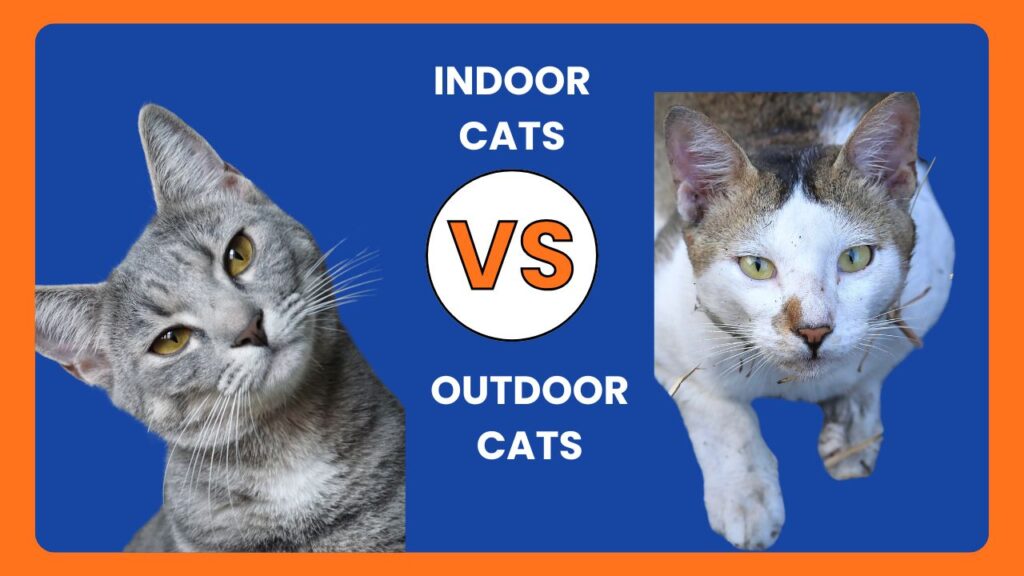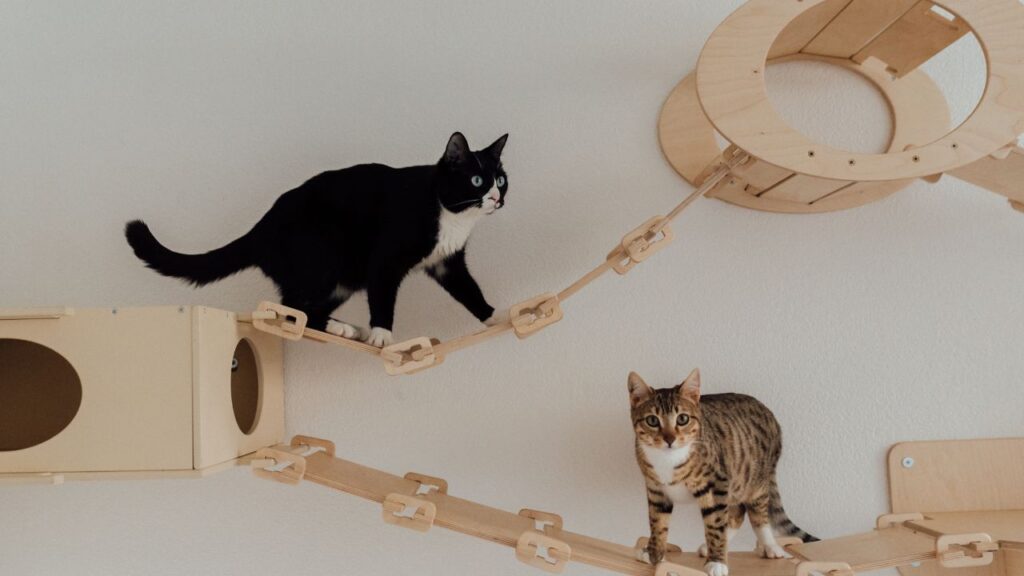Have you ever watched your cat gracefully navigate the nooks and crannies of your home and wondered, how many miles can a cat travel in a day? While our feline friends may not embark on epic road trips, understanding their daily movements can provide insights into their behavior, health, and overall well-being. Whether you’re a pet owner curious about your cat’s activity levels or considering adopting a more active breed, this comprehensive guide explores the distances cats typically cover and the factors influencing their daily mileage.
Contents
- 1 Understanding a Cat’s Daily Activity
- 2 Breaking Down the Miles: Indoor vs. Outdoor Cats
- 3 The Health Implications of Daily Mileage
- 4 Enhancing Your Cat’s Daily Activity
- 5 Comparison of Indoor vs. Outdoor Activity
- 6 Personal Insights: Observing My Own Cat’s Travels
- 7 Frequently Asked Questions
- 8 Final Thoughts
Understanding a Cat’s Daily Activity
The Feline Lifestyle
Cats are known for their independent and often mysterious nature. Unlike dogs, who eagerly accompany their owners on walks, cats usually prefer the comfort of their home. However, their daily activities can still encompass a surprising amount of movement.
How many miles can a cat travel in a day varies widely based on several factors, including age, health, environment, and personality. On average, a typical indoor cat may walk anywhere between 1 to 3 miles daily through activities like exploring different rooms, chasing toys, or simply stretching their legs.
Key Factors Influencing Daily Mileage
- Age: Kittens and younger cats tend to be more active, covering more ground compared to older cats.
- Health: Healthy cats with no mobility issues are more likely to be active and travel more miles.
- Environment: Indoor cats may have limited space, while outdoor or semi-outdoor cats can roam larger areas.
- Personality: Some cats are naturally more adventurous and curious, leading to more movement throughout the day.

Breaking Down the Miles: Indoor vs. Outdoor Cats
Indoor Cats
Indoor cats have a confined space, which naturally limits the number of miles they can travel. However, their environment can be enriched to encourage more movement:
- Vertical Spaces: Cat trees and shelves allow cats to climb and explore vertically.
- Interactive Toys: Toys that mimic prey can stimulate hunting instincts and encourage chasing.
- Playtime: Regular interactive play sessions can significantly increase a cat’s daily activity.
| Activity | Estimated Miles |
|---|---|
| Exploring Rooms | 0.5 – 1 mile |
| Playing with Toys | 0.2 – 0.5 mile |
| Climbing and Jumping | 0.3 – 0.7 mile |
| Total Daily Mileage | 1 – 3 miles |
Bold important points: Enriching an indoor environment can help maximize your cat’s daily mileage and keep them healthy.
Outdoor Cats
Outdoor cats have the opportunity to explore a much larger area, potentially traveling several miles a day. So how many miles can a cat travel in a day? Their mileage can fluctuate based on:
- Territory Size: Cats with larger territories will naturally cover more ground.
- Access to Safe Outdoor Spaces: Secure fencing or designated outdoor areas can encourage safe exploration.
- Predator Presence: The presence of predators or other threats can limit how far a cat ventures.
How many miles can a cat travel in a day outdoors can range from 3 to 10 miles, depending on the factors mentioned above.
The Health Implications of Daily Mileage
Physical Health
Regular movement is crucial for maintaining a cat’s physical health. Adequate exercise helps prevent obesity, promotes cardiovascular health, and maintains muscle tone. Monitoring how many miles can a cat travel in a day can help ensure your cat is getting enough exercise.
Mental Stimulation
Physical activity is closely linked to mental well-being. Active cats are less likely to develop behavioral issues such as aggression or anxiety. Engaging your cat in regular play can keep their minds sharp and reduce stress.
Weight Management
Tracking your cat’s daily mileage can aid in managing their weight. Overweight cats may be less active, while underweight cats might be expending too much energy without adequate nutrition. Maintaining a balance is key to a healthy feline lifestyle.

Enhancing Your Cat’s Daily Activity
Creating an Engaging Environment
To increase your cat’s daily mileage, consider enhancing their environment:
- Interactive Play Areas: Set up multiple play zones with different toys and climbing structures.
- Puzzle Feeders: These stimulate mental and physical activity as cats work to access their food.
- Safe Outdoor Access: Providing a secure outdoor space or a catio can encourage more exploration.
Encouraging Movement Through Play
Regular playtime is essential for boosting your cat’s activity levels. Here are some tips:
- Scheduled Play Sessions: Consistency helps establish a routine that your cat can look forward to.
- Variety of Toys: Rotate toys to keep your cat interested and engaged.
- Interactive Toys: Laser pointers, feather wands, and motorized toys can stimulate your cat’s hunting instincts.
Monitoring and Tracking
Keeping track of your cat’s activity can provide valuable insights into their health and behavior:
- Activity Trackers: Specialized pet activity trackers can monitor your cat’s movements and provide data on their daily mileage.
- Observation: Regularly observing your cat’s behavior and noting changes can help identify potential health issues early.
Comparison of Indoor vs. Outdoor Activity
| Aspect | Indoor Cats | Outdoor Cats |
|---|---|---|
| Daily Mileage | 1 – 3 miles | 3 – 10 miles |
| Safety Risks | Low (controlled environment) | Higher (predators, traffic, diseases) |
| Health Benefits | Moderate, with enrichment | High, more natural exercise and exploration |
| Behavioral Impact | Lower risk of behavioral issues with proper stimulation | Potential for stress due to environmental threats |
| Longevity | Generally longer due to fewer hazards | Shorter lifespan due to increased risks |
Bold important points: Each environment has its unique benefits and challenges. Choosing the right setup depends on your cat’s personality and your ability to provide a safe, stimulating environment.
Personal Insights: Observing My Own Cat’s Travels
From my experience, understanding how many miles can a cat travel in a day starts with keen observation. My cat, Luna, is an indoor explorer. By introducing climbing shelves and interactive toys, I’ve noticed her daily mileage steadily increase. It’s fascinating to see her navigate new paths and engage more actively with her environment. This not only keeps her physically fit but also mentally stimulated, reducing her tendency to nap excessively and keeping her mood upbeat.
Frequently Asked Questions
How Many Miles Should My Cat Travel Each Day?
There’s no one-size-fits-all answer, but aiming for 1 to 3 miles for indoor cats and 3 to 10 miles for outdoor cats is a good benchmark. Adjust based on your cat’s age, health, and personality.
Can I Encourage My Cat to Be More Active?
Absolutely! Enhancing their environment with toys, climbing structures, and regular playtime can significantly boost your cat’s activity levels.
What If My Cat Isn’t Moving Much?
If your cat is unusually inactive, it might be a sign of health issues. Consult your veterinarian to rule out any underlying problems.
Are There Any Risks to High Activity Levels in Cats?
While regular exercise is beneficial, excessive activity without proper nutrition can lead to weight loss or injury. Ensure your cat has a balanced diet and monitor their activity levels.
How Can I Track My Cat’s Mileage?
Using pet activity trackers or simply keeping a log of their play sessions and movements can help you monitor how many miles your cat travels each day.
Final Thoughts
Understanding how many miles can a cat travel in a day offers valuable insights into your feline friend’s health and happiness. Whether your cat is an indoor lounger or an outdoor explorer, ensuring they get enough exercise and mental stimulation is key to their well-being. By creating an engaging environment, encouraging regular play, and monitoring their activity, you can help your cat lead a vibrant and active life. After all, a happy cat is an active cat, and their daily journeys, no matter how many miles, contribute significantly to their overall quality of life.


